#Milltown Cemetery
Text

Totenstill
Milltown Cemetery, Belfast
20 notes
·
View notes
Text
#OTD in 1919 – Birth of Máire Drumm in Newry, Co Down.
‘The only people worthy of freedom are those who are prepared to go out and fight for it every day, and die if necessary.’ –Máire Drumm
Máire Drumm was the vice president of Sinn Féin and a commander in Cumann na mBan. She was killed by Ulster loyalists while recovering from an eye operation in Belfast’s Mater Hospital.
Born in Newry, Co Down to a staunchly Irish republican family. Drumm’s mother…

View On WordPress
#An Phoblacht#Assassinated#Belfast&039;s Mater Hospital#Bodenstown#Co. Armagh#Co. Down#Commander#Cumann na mBan#Killean#Máire Drumm#Milltown Cemetery#Newry#Northern Ireland Civil Rights Association#Sinn Fein#Ulster Defence Association#Ulster Volunteer Force#Vice President
8 notes
·
View notes
Text
Bibliography
Armstrong, H. (2009) Graphic design theory : readings from the field. Edited by H. Armstrong. New York: Princeton Architectural Press.
Meriwether, N.G. (2012) Reading the Grateful Dead a critical survey. Lanham: Scarecrow Press, Inc.
Hartley, T. (2014) Milltown Cemetery: The History of Belfast, Written In Stone, Book 2. Belfast: Blackstaff Press Ltd.
Papanek, V.J. (1984) Design for the real world : human ecology and social change. 2nd edn. Thames and Hudson.
Paulsen, K.S. (2022) Integrated storytelling by design : concepts, principles and methods for new narrative dimensions. New York, NY: Routledge.
Hannula, M., Suoranta, J. and Vadén, T. (2014) Artistic research methodology : narrative, power, and the public. New York: Peter Lang Publishing.
Gutierrez, C. (2010) ‘Spiritualism: Communication with the Dead’, Religion compass, 4(12), pp. 737–745. Available at: https://doi.org/10.1111/j.1749-8171.2010.00250.x.
Colbert, C. (2011) Haunted Visions: Spiritualism and American Art. Philadelphia: University of Pennsylvania Press, Inc. Available at: https://doi.org/10.9783/9780812204995.
0 notes
Photo
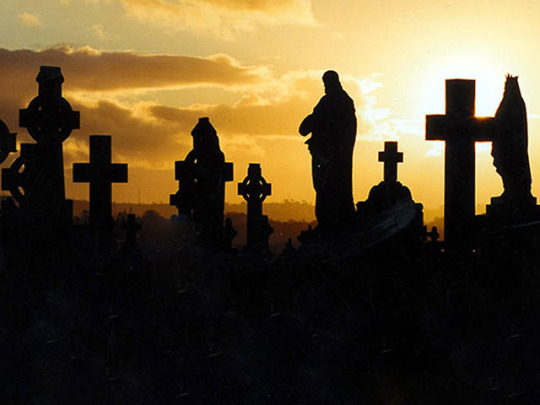
Milltown Cemetery - Belfast, Ireland
#cemetery#milltown cemetery#sunset#belfast#ireland#graves#statue#crosses#tombstones#graveyard#melancholy
36 notes
·
View notes
Photo

TRIBUTATO ONORE PARAMILITARE A MARTIN McELKERNEY I colpi di arma da fuoco sono stati sparati in aria da un gruppo di uomini con il viso coperto da passamontagna, in tributo all’ex leader dell’INLA morto venerdì 17 maggio…
#inla#Irish National Liberation Army#irlanda del nord#Martin McElkerney#milltown cemetery#northern ireland#onore paramilitare#Qradio#West Belfast
0 notes
Photo
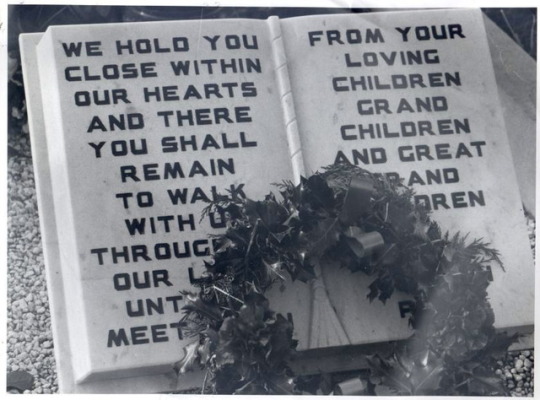
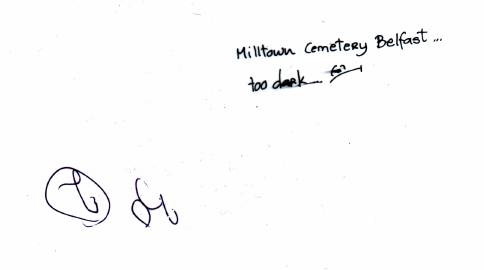
Milltown Cemetery Belfast 90s - izan
I know Belfast was a place where she felt the happiest.
2 notes
·
View notes
Text
Michael Stone not entitled to any second chance at early release, court told
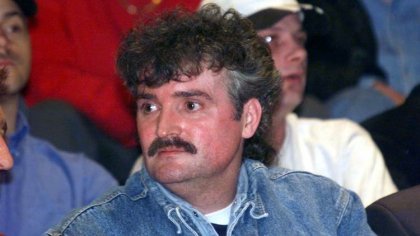
Loyalist prisoner Michael Stone. (PA Archive)
Jailed loyalist killer Michael Stone is not entitled to any second chance at early release, the High Court was told
Lawyers for the sister of one of the Milltown Cemetery bomber’s victims claimed Northern Ireland’s Sentence Review Commissioners (SRC) have no jurisdiction to consider his bid to be freed again under the terms of the Good Friday…
View On WordPress
#Loyalist prisoner Michael Stone. (PA Archive)#Michael Stone not entitled to any second chance at early release - court told#ROCKET: Michael Stone is restrained by security staff at Parliament Buildings (PA)#Stone carried out his attack at Milltown Cemetery in March 1988
0 notes
Text
John Henrik Clarke

Remembering John Henrik Clarke.
https://www.wikiwand.com/en/John_Henrik_Clarke
Dr. John Henrik Clarke (born John Henry Clark, January 1, 1915 – July 12, 1998), was a Pan-Africanist writer, historian, professor, and a pioneer in the creation of Africana studies and professional institutions in academia starting in the late 1960s.
Early life and education
He was born John Henry Clark on January 1, 1915, in Union Springs, Alabama, the youngest child of sharecroppers John (Doctor) and Willie Ella (Mays) Clark (who died in 1922). With the hopes of earning enough money to buy land rather than sharecrop, his family moved to the closest milltown, Columbus, Georgia.
Counter to his mother's wishes for him to become a farmer, Clarke left Georgia in 1933 by freight train and went to Harlem, New York as part of the Great Migration of rural blacks out of the South to northern cities. There he pursued scholarship and activism. He renamed himself as John Henrik (after rebel Norwegian playwright Henrik Ibsen) and added an "e" to his surname, spelling it as "Clarke."
Positions in academia
Clarke was a professor of Black and Puerto Rican Studies at Hunter College of the City University of New York from 1969 to 1986, where he served as founding chairman of the department. He also was the Carter G. Woodson Distinguished Visiting Professor of African History at Cornell University’s Africana Studies and Research Center. Additionally, in 1968 he founded the African Heritage Studies Association and the Black Caucus of the African Studies Association.
In its obituary of Clarke, The New York Times noted that the activist's ascension to professor emeritus at Hunter College was "unusual... without benefit of a high school diploma, let alone a Ph.D." It acknowledged that "nobody said Professor Clarke wasn't an academic original." In 1994, Clarke earned a doctorate from the non-accredited Pacific Western University (now California Miramar University) in Los Angeles, having earned a bachelor's degree there in 1992.
Career
By the 1920s, the Great Migration and demographic changes had led to a concentration of African Americans living in Harlem. A synergy developed among the artists, writers and musicians and many figured in the Harlem Renaissance. They began to develop supporting structures of study groups and informal workshops to develop newcomers and young people.
Arriving in Harlem at the age of 18 in 1933, Clarke developed as a writer and lecturer during the Great Depression years. He joined study circles such as the Harlem History Club and the Harlem Writers' Workshop. He studied intermittently at New York University, Columbia University, Hunter College, the New School of Social Research and the League for Professional Writers. He was an autodidact whose mentors included the scholar Arturo Alfonso Schomburg. From 1941 to 1945, Clarke served as a non-commissioned officer in the United States Army Air Forces, ultimately attaining the rank of master sergeant.
In the post-World War II era, there was new artistic development, with small presses and magazines being founded and surviving for brief times. Writers and publishers continued to start new enterprises: Clarke was co-founder of the Harlem Quarterly (1949–51), book review editor of the Negro History Bulletin (1948–52), associate editor of the magazine, Freedomways, and a feature writer for the black-owned Pittsburgh Courier.
Clarke taught at the New School for Social Research from 1956 to 1958. Traveling in West Africa in 1958–59, he met Kwame Nkrumah, whom he had mentored as a student in the US, and was offered a job working as a journalist for the Ghana Evening News. He also lectured at the University of Ghana and elsewhere in Africa, including in Nigeria at the University of Ibadan.
Becoming prominent during the Black Power movement in the 1960s, which began to advocate a kind of black nationalism, Clarke advocated for studies of the African-American experience and the place of Africans in world history. He challenged the views of academic historians and helped shift the way African history was studied and taught. Clarke was "a scholar devoted to redressing what he saw as a systematic and racist suppression and distortion of African history by traditional scholars." He accused his detractors of having Eurocentric views. His writing included six scholarly books and many scholarly articles. He also edited anthologies of writing by African Americans, as well as collections of his own short stories. In addition, Clarke published general interest articles. In one especially heated controversy, he edited and contributed to an anthology of essays by African Americans attacking the white writer William Styron and his novel, The Confessions of Nat Turner, for his fictional portrayal of the African-American slave known for leading a rebellion in Virginia.
Besides teaching at Hunter College and Cornell University, Clarke founded professional associations to support the study of black culture. He was a founder with Leonard Jeffries and first president of the African Heritage Studies Association, which supported scholars in areas of history, culture, literature and the arts. He was a founding member of other organizations to support work in black culture: the Black Academy of Arts and Letters and the African-American Scholars' Council.
Personal life
Clarke's first marriage was to the mother of his daughter Lillie (who died before her father). They divorced.
In 1961, Clarke married Eugenia Evans in New York, and together they had a son and daughter: Nzingha Marie and Sonni Kojo. The marriage ended in divorce.
In 1997, John Henrik Clarke married his longtime companion, Sybil Williams. He died of a heart attack on July 12, 1998, at St. Luke's-Roosevelt Hospital Center. He was buried in Green Acres Cemetery, Columbus, Georgia.
Legacy and honors
* 1985 – Faculty of the Africana Studies and Research Center at Cornell University named the John Henrik Clarke Library after him.
* 1995 – Carter G. Woodson Medallion, Association for the Study of Afro-American Life and History.
* 2002 – Molefi Kete Asante listed Dr. John Henrik Clarke as one of his 100 Greatest African Americans.
* 2011 – Immortal Technique includes a short speech by Dr. Clarke on his album The Martyr. It is Track 13, which is entitled "The Conquerors".
5 notes
·
View notes
Text
Paranormal Activity in the Crumlin Road Gaol
The Crumlin Road Gaol was built from 1843-1845 in Belfast, Northern Ireland, and is reportedly one of the city's most haunted buildings. The prison itself was in use from 1845 to 1998, until the last prisoner walked free, and is the only Victorian era prison still standing in the city.
A gaol infamous in the area for carrying out the death penalty, a total 17 prisoners were put to death, the last four days before Christmas Eve, 1961. The remains of fifteen of the seventeen death row prisoners still reside inside the gaol's walls. The other two were relocated to Milltown Cemetery soon after. The noose used to hang the death row prisoners still hangs in the death cell today.
After use of the prison was discontinued, ghost hunts began. Reportings of spirits, both passive and malevolent began to surface. With these new-found paranormal hotspots came the obvious choice to begin "ghost tours" of the prison. The tour lasts about an hour and features the terrifying Death Cell and Padded Cell, both of which are hotspots for paranormal activity. Reports of pushing and being touched, feelings of overwhelming unease and a dark shadow figure followed suit after the tours began.
In the underground tunnel connecting the gaol to the Courthouse across the road, strange happenings were reported even when the prison was active, usually of a grey spector, and recently, recordings have been captured by ghost hunters of a male voice, groaning, sighing, coughing and whistling.
In the B-Wing resides the ghostly warden whose footsteps can still be heard walking the corridors, completing his nightly duties. This is presumably the dark figure who drifts from cell to cell. D-Wing is the home of the passive spirit who merely slams doors and watches the visitors' activities in the gaol.
My girlfriend, who has been on the ghost tour, says the group was communicating with a spirit, whom the group believed to be the spirit of a little boy. The spirit was, in reality, the ghost of a serial killer. The temperature dropped in one area to the right of a member of the group, the EMF bear lit up all the way and the man collapsed to the ground. The guide had never seen anything like this before.
The ghost tour is for ages 15+, minimum numer of people for a private group is 15 (30 in October) and costs £12 per person. If you happen to be in the area, it is definitely worth a visit.
2 notes
·
View notes
Photo

Members of the Irish Republican Army, unseen, watched by local children and British soldiers, lead a parade past a British Army observation post before arriving at Milltown Cemetery in the Falls Road area of west Belfast, Northern Ireland, April 1, 1972. Milltown Cemetery is Belfast’s Catholic cemetery where the IRA bury their dead. (AP Photo/Michel Lipchitz)
1 note
·
View note
Photo

Blessed John Sullivan S.J. (1861-1933) – Priest, Religious, Lawyer, Teacher, Writer, Miracle Worker, Apostle of Charity. Patronages – Ecumenism, teachers. Blessed John (8 May 1861 – 19 February 1933) was an Irish Roman Catholic priest and a professed member of the Jesuits. Sullivan was known for his life of deep spiritual reflection and personal sacrifice; he is recognised for his dedicated work with the poor and afflicted and spent much of his time walking and riding his bike to visit those who were troubled or ill in the villages around Clongowes Wood College school where he taught from 1907 until his death. Sullivan was received into the Roman Catholic Church on 21 December 1896 in a celebration that the Jesuit priest Michael Gavin presided over at Farm Street Church Mayfair in central London. His family had expressed their great surprise upon his decision to convert to the Catholic faith. He commenced his Jesuit novitiate on 7 September 1900 at Saint Stanislaus College at Tullabeg. On completion of his novitiate around 1901 he was sent for his philosophical studies – until 1904 – to Saint Mary’s Hall in Stonyhurst. In 1904 – once he concluded his studies – he went to Milltown Park in Dublin for his theological studies and the Archbishop of Dublin William Walsh later ordained Sullivan as a Jesuit priest in the chapel at Milltown Park on 28 July 1907. He said his first Mass at the convent of the Irish Sisters of Charity at Mount Saint Anne’s in Milltown. In February 1933 he began suffering severe abdominal pains and so was transferred on 17 February from the college to Saint Vincent’s Nursing Home in Lower Leeson Street in Dublin while asking for his breviary to be brought to him. Sullivan died at 11:00 pm on 19 February 1933 with his brother Sir William Sullivan at his side; an old friend who was present at his death said: “He died well”. He was buried in Clongowes Wood Cemetery. In 1960 his remains were exhumed and transferred to Saint Francis Xavier Church on Upper Gardiner Street. https://www.instagram.com/p/CaKXCGvLXvQ/?utm_medium=tumblr
0 notes
Text
#OTD in 1951 – Birth of Volunteer Joe McDonnell, in Lenadoon, Belfast, who died in the 1981 Irish hunger strike.
McDonnell was born on Slate Street in the Falls Road of west Belfast on 14 Sept 1951, and was the fifth of 10 children and went to a nearby Roman Catholic school. In 1970, he married Goretti, and moved into her sister’s house in Lenadoon. There were only two Catholic houses in this predominantly Ulster Protestant housing estate, and the house was attacked on numerous occasions.
McDonnell was…
View On WordPress
#H Blocks#Hunger Strike#Ireland#Joe McDonnell#Long Kesh Prison#Milltown Cemetery#Northern Ireland#Remember the Ten#The Irish Brigade#The Wolfe Tones
11 notes
·
View notes
Text
Milltown City Cemetery, Falls Road
When it comes to graveyards, the opinion is divided as to whether you’ll come across anything of a supernatural nature. Some believers in the paranormal say that you are not likely to see a ghost in a graveyard, as they are more attached to people and the places they loved in life. The latter group of believers will argue that graveyards are a hive of paranormal activity. In fact I even have a friend who has founded their own paranormal research group and they are forever showing me footage suggesting that the graveyards they have researched are very much active and haunted.
Without a doubt graveyards are enigmatic places, they definitely possess an atmosphere of intrigue and perhaps a creepy vibe which would make the most discerning of minds run amuck if walking alone through one on the darkest of nights! One such place local to Belfast can be found on the Falls Road, otherwise known as Milltown City Cemetery.
Before we get down to the ghosts and ghouls, let’s start with some interesting facts. Milltown Cemetery was founded on 1st August 1869 due to the ever growing population rate of Belfast. Both denominations of the Catholic and Protestant faith were buried here, in fact there are underground walls within the cemetery that were to divide each plot of land according to religion. I kid you not. Even in death, religious segregation was prominent and taken seriously in the 19th century.
These nine foot underground walls also separated a plot set aside for the Jewish community in 1916. It is said that some of the plots were non-consecrated ground. Paupers were buried here, as were the rich and famous. The first members to be buried were two pauper girls. Mortality rates amongst children were significantly higher in the 19th century due to there being a vast amount of poverty, no National Health Service and poor diet, amongst other factors such as children being made to work long gruelling hours from a young age.

Poverty was rife, leading to high death rates among children.
Daniel Joseph Jaffe rests in Milltown Cemetery, the funder and founder of the first synagogue in Great Victoria Street. His son Otto Jaffe was one of the many Lord Mayors of Belfast, who erected a fountain memorial in his father’s honour which can be seen outside Victoria Square today. Daniel Joseph Jaffe was also an active philanthropist and successful linen merchant. However being Jewish made him the target of anti-semitism, leading to his gravestone being vandalised. It is said that the ghost of Daniel Joseph Jaffe stills haunts passer’s by out of wrath for the vandalism directed at his gravestone.

Daniel Jospeh Jaffe’s Memorial
Another tale is retold by a pharmacist working near Milltown City Cemetery who got chatting to a man who came in with a prescription of painkillers. This man is called John and he was meeting his girlfriend at the graveyard for a carry-out of beer and vodka.
John made his way through the graveyard and sat down against a grave marked with the inscription ‘Charles Abernethy...died 19th September 1933′. He opened a cold beer and sat back to enjoy the remaining sunset of that cool winter’s evening. It was then he felt the ground open up and move from beneath, trailing him beneath the soil.
The more he tried to sit up, the more the earth swallowed him up. His mobile phone rang, his girlfriend wondering where he was. He could do nothing but hit the answer button, and hope for someone to come and find him. For this point the gravestone fell on top of him, pushing him further into the darkness the dirt blinding his eyes, blocking his ears, suffocating his airways into dark silence...
Police eventually found him from reports of him being missing from the hostel and a very concerned girlfriend on their case to find her boyfriend. It took a crane to pull the gravestone off John and he was brought to A&E, hence winding up telling the pharmacist his tale while waiting for his painkillers!
What could have possibly happened to John? Did he happen to sit on a crumbling 9 foot underground wall? Did he get sucked into the dark depths of a grave, controlled by the spirit of Charles Abernethy who sought to punish for his lack of temperance on the resting place of the dead? No-one will truly know, but he is very lucky that he was found!

Milltown City Cemetery, Falls Road
Another tale occurred just outside the cemetery, of a woman who got ran over by a black taxi on one wet and dark December’s day. People driving past the cemetery around the same time of year see a young woman run in front of their car and get knocked down. Thinking they’ve ran someone over, they get out of their vehicle to see no sign of anyone there.
One of the things I love about Belfast is there is always something slightly more unusual in its way of life-and perhaps in its way of the afterlife too. I will leave you with a parting article which puts one in mind of the phrase, ‘if only gravestones could talk...’ The following can be found in the Public Records of Northern Ireland (PRONI) archives. It was published in the Irish News. Until next time, sleep tight....
“Wednesday, July 28th 1926
PHOTOGRAPHING SPIRITS
Remarkable Service in Belfast Cemetery
Our Belfast correspondent states that unusual scenes were witnessed at a Service held yesterday at the City Cemetery under the auspices of the local Christian Spiritualists' Association. The Service took place around the grave of Mrs McDermott, mother of Mr John McDermott, medium of the Association, who died about three weeks ago. Upwards of a hundred spiritualists, some of them carrying cameras, wre present and during the singing photographs were taken. Mr McDermott conducted the Service, which consisted of prayer, singing and an address.
Mr. Edwin Graham, secretary of the Association, explained that the Service was purely evangelical, and that many photographs had been taken with the object of photographing the spirits of departed friends of persons present at the grave. "It is a very hard thing," he added "to obtain spirit photographs". He added that when the photographs were developed, in a day or two, they would know whether they had succeeded in their object. Mr Graham explained that a special Service for Mrs McDermott had been held previously in the Hall. She was a native of Glasgow but had been in Belfast for the past year”
Sources:
http://watchinghorrorfilmsfrombehindthecouch.blogspot.com/2012/04/belfast-city-cemetery.html
https://www.paranormaldatabase.com/hotspots/belfast.php
https://www.irelandbeforeyoudie.com/top-10-famous-people-buried-in-belfast-city-cemetery/
https://discovernorthernireland.com/Belfast-City-Cemetery-Belfast-P25366/
https://sluggerotoole.com/2017/04/29/the-dead-are-rising-from-their-graves-in-west-belfast/
http://www.belfastforum.co.uk/index.php?topic=21060.1320
http://www.culturenorthernireland.org/article/550/otto-jaffe
http://britishgenes.blogspot.com/2014/10/pronis-spiritualist-photos-and-my.html
Photos:
https://www.pinterest.co.uk/offsite/?token=501-585&url=https%3A%2F%2Fsuddendenouement.com%2F2017%2F09%2F27%2Frecombinant-selves-a-collaborative-of-11-writers%2F&pin=744571750866039804&client_tracking_params=CwABAAAADDkzODk3NjQ3MDY5OAA~0
https://commons.wikimedia.org/wiki/File:Jaffe_Fountain_-_Victoria_Square,_Belfast_-_panoramio_(4).jpg
https://www.findagrave.com/cemetery/1967927/belfast-city-cemetery#view-photo=30152870
2 notes
·
View notes
Photo
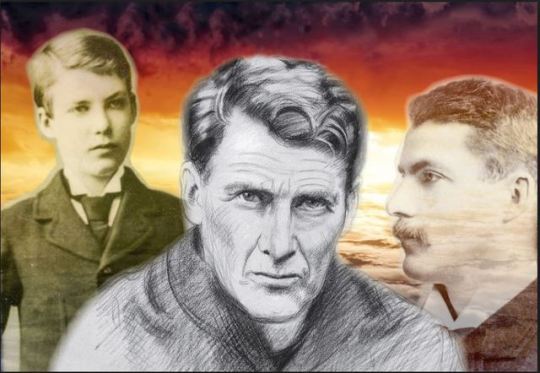
Saint of the Day – 19 February – Blessed John Sullivan S.J. (1861-1933) – Priest, Religious, Lawyer, Teacher, Writer, Miracle Worker, Apostle of Charity. Patronages – Ecumenism, teachers. Blessed John (8 May 1861 – 19 February 1933) was an Irish Roman Catholic priest and a professed member of the Jesuits. Sullivan was known for his life of deep spiritual reflection and personal sacrifice; he is recognised for his dedicated work with the poor and afflicted and spent much of his time walking and riding his bike to visit those who were troubled or ill in the villages around Clongowes Wood College school where he taught from 1907 until his death.
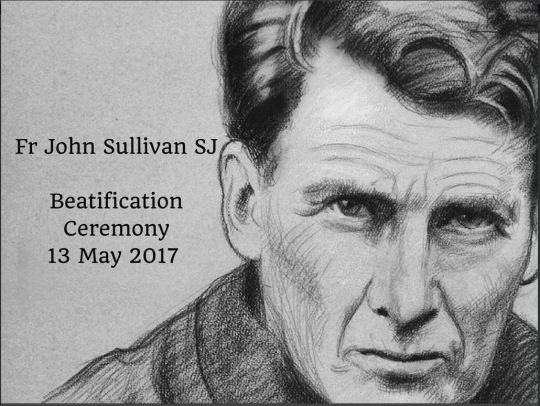
From the 1920s onwards there were people who testified to his healing power despite the fact that he never claimed credit or causation for himself from these reported cases. Father Sullivan was known for his friendliness, his amiable nature was coupled with a somewhat shy temperament but one willing to aid those who needed it most. He was noted for his strong faith and for leading multiple penances on himself such as eating little.
Sullivan had long been admired during his life and was known as a man of inspirational holiness which prompted for calls for his beatification; the cause later opened and would culminate on 7 November 2014 after Pope Francis confirmed his heroic virtue and named him as Venerable. The same pope approved a miraculous healing credited to his intercession on 26 April 2016. His beatification, the first ever to take place Ireland, took place in Dublin on 13 May 2017 and was celebrated by Cardinal Angelo Amato.

Childhood and education
John Sullivan was born in mid-1861 at 41 Eccles Street in the old Dublin. He was born as the last of five children to Sir Edward Sullivan (10.07.1822–13.04.1885) – member of the Church of Ireland and a successful barrister who would later become the Lord Chancellor of Ireland – and Elizabeth Josephine Bailey (1823–27.01.1898) – a Roman Catholic from a prominent land-owning household in Passage West. Sullivan was raised as a Protestant and was baptised in the local Church of Ireland parish of Saint George on Temple Street on 15 July 1861. One sister was Annie Sullivan (1852-25.01.1918) and a brother was William (23.02.1860–07.07.1937). The girls were raised as Catholics while the sons were raised as Protestants. The first child was Annie and then came Edward, Robert and William.
In late 1861 the household relocated to 32 Fitzwilliam Place in Dublin. In 1873 he was sent to the Portora Royal School in Enniskillen with his brother William. In 1877 his brother Robert (1853–77) drowned after a boating accident in Killiney Bay along with Constance Exham who was the daughter of a family friend.
After his time at the Portora Royal School he followed in his father’s footsteps and went to Trinity College from 1879 where he studied classics. He was awarded the Gold Medal in Classics in 1885 and he studied for the English Bar at Lincoln’s Inn in London. During this period he travelled across Europe and spent time taking walking tours in Macedonia and Greece as well as Asia Minor. He spent several months in one of the Orthodox monasteries on Mount Athos and even contemplated entering it as a monk. He travelled through Southern Italy en route home but was forced to prolong his stay there due to contracting smallpox.
Upon his father’s death in 1885 he came into a comfortable inheritance. He was a frequent visitor to the Hospice of the Dying at Harold’s Cross where he brought comfort and companionship in addition to small tokens of food and drink as well as clothing to those ill people. Even after he became a teacher at Clongowes Wood College he continued these small luxuries to the poor including a bit of tobacco while also providing them with tea and sugar as well as oranges and apples. His brother novices remember him for his small kindnesses extended to his classmates.

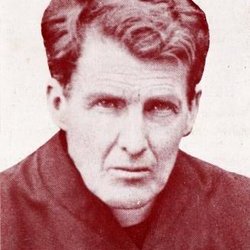
Conversion and priesthood
Sullivan was received into the Roman Catholic Church on 21 December 1896 in a celebration that the Jesuit priest Michael Gavin presided over at Farm Street Church Mayfair in central London. His family had expressed their great surprise upon his decision to convert to the Catholic faith. He commenced his Jesuit novitiate on 7 September 1900 at Saint Stanislaus College at Tullabeg. On completion of his novitiate around 1901 he was sent for his philosophical studies – until 1904 – to Saint Mary’s Hall in Stonyhurst. In 1904 – once he concluded his studies – he went to Milltown Park in Dublin for his theological studies and the Archbishop of Dublin William Walsh later ordained Sullivan as a Jesuit priest in the chapel at Milltown Park on 28 July 1907. He said his first Mass at the convent of the Irish Sisters of Charity at Mount Saint Anne’s in Milltown.

Sullivan soon after took up a teaching position at Clongowes Wood College which was an all-male boarding school the Jesuits managed near Clane. From 25 July 1919 until 20 May 1924 he served as the rector of the Juniorate and Retreat House at Rathfarnham Castle on the outskirts of Dublin. Sullivan then returned to teaching at Clongowes Wood College after this. Sullivan was untiring in his attention to the sick and he would travel miles to make a sick call which was often on foot but also riding a battered bike. On one occasion a workman by chance passed the chapel at the school at 2:00 am to see Sullivan in deep prayer on his knees. Each Holy Thursday, he spent five or six hours kneeling before the altar.

Illness and death
In February 1933 he began suffering severe abdominal pains and so was transferred on 17 February from the college to Saint Vincent’s Nursing Home in Lower Leeson Street in Dublin while asking for his breviary to be brought to him. Sullivan died at 11:00 pm on 19 February 1933 with his brother Sir William Sullivan at his side; an old friend who was present at his death said: “He died well”. He was buried in Clongowes Wood Cemetery. In 1960 his remains were exhumed and transferred to Saint Francis Xavier Church on Upper Gardiner Street.
Beatification
In 1944 his name was placed on the list that the Jesuit postulator Carlo Micinelli had set up in relation to prospective sainthood causes that could be opened; opening the process saw him titled as a Servant of God. The informative process that opened in 1953 saw the accumulation of witness testimonies and documentation being gathered and this process was completed in September 1960. The Congregation for the Causes of Saints were given the evidence and validated the informative process in acceptance in 1969 prior to theologians approving his spiritual writings in 1972. On 22 February 2000 the C.C.S. issued the official “nihil obstat” to the cause which acted as a formal introduction to the cause and approval of its continuation.
In June 2002 another process was held in Dublin to collate further evidence and the findings of this particular tribunal were forwarded to the C.C.S. who validated it on 18 October 2002. In 2004 the postulation submitted the Positio dossier to the C.C.S. for inspection with their consulting theologians approving its contents on 19 November 2013; the C.C.S. later approved this on 16 October 2014.
On 7 November 2014 he was named as Venerable after Pope Francis – himself a Jesuit – approved a decree acknowledging the heroic virtue of the late priest’s life based on the cardinal and theological virtues. Sullivan’s beatification depended on the approval of a miracle that was an unexplainable healing after his death; one such case was investigated in Ireland and it received C.C.S. validation on 10 February 2006. The C.C.S. approved this miracle on 19 April 2016 after the medical experts and theologians approved it. The pontiff – on 26 April 2016 – approved a miracle attributed to the late priest’s intercession and thus approved his beatification to take place. The miracle approved was the 1954 healing of a cancerous tumor on the neck of the Dublin woman Delia Farnham.
The beatification was celebrated in Dublin at the Saint Francis Xavier Church on 13 May 2017. He was also the first person to ever be beatified in Ireland.

The current postulator for this cause is the Jesuit priest Anton Witwer. The current vice-postulator is the Jesuit priest Conor Harper.
Devotions and legacies
There is a constant demand for blessings with his vow crucifix which is kept in the Saint Francis Xavier Church where his remains are located in the Sacred Heart Chapel. There is a special Mass celebrated in that church once each month dedicated to him and there is also an annual Mass to celebrate his life at the same church celebrated close to the commemoration of his 1933 death. The people of Kildare created their own monument to the late priest in Clane close to Clongowes Wood College.
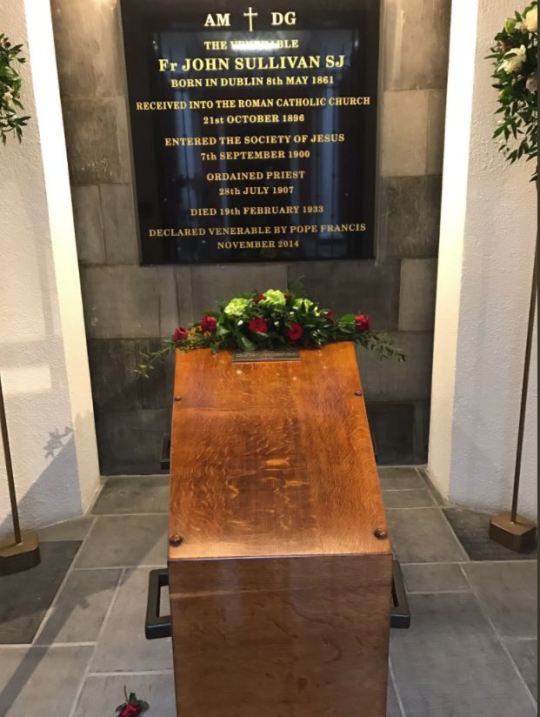

Sullivan had been a Protestant until he reached middle age though that church was an important aspect to his life. On 8 May 1983 the retired Church of Ireland Archbishop George Simms gave the address at a memorial service to honour Sullivan’s life and work which was held in Saint Georges Church on Temple Street. The Catholic Auxiliary Bishop James Kavanagh attended and bought with him a text from Pope John Paul II reading: “His Holiness asks you to convey his cordial greetings to all present. In communion of prayer he gives thanks to Almighty God for the extraordinary gifts bestowed on Father Sullivan during his life and for the spirit of mutual understanding, reconciliation and goodwill which his memory enkindles between various christian communities in Ireland today”.

Miracles during his lifetime
There have been miracles reported during Sullivan’s life such as the two mentioned below:
The cure of Michael Collins (b. 1925) – nephew of the famed Michael Collins – from infantile paralysis. The child awoke one night in October 1928 in extreme distress and the summoned doctor diagnosed him with infantile paralysis. Mrs Collins drove to the school seeking out Sullivan’s assistance; Sullivan promised to say a Mass but also rode his bike to their home where he touched the child’s leg and prayed over him for two hours.
The cure of Miss Kitty Garry (aged ten at the time) from TB; he blessed her and the ailment left her after a month.

(via AnaStpaul – Breathing Catholic)
18 notes
·
View notes
Photo
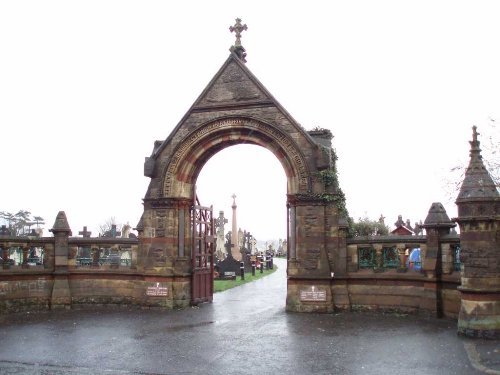



Milltown Cemetery is a large cemetery in the west of Belfast, Northern Ireland. It lies within the town of Ballymurphy. The Milltown Cemetery was inaugurated in 1869 as part of the wider offering of services to Belfast's expanding Catholic population.
#cemetery#milltown cemetery#belfast#ireland#northen ireland#irish#graves#tombs#graveyards#pathway#tombstones
26 notes
·
View notes
Text
MORTO SUICIDA MARTY McILKERNEY. FU LEADER DELL'INLA
MORTO SUICIDA MARTY McILKERNEY. FU LEADER DELL’INLA
Marty McIlkerney, ex leader dell’INLA, è morto in ospedale a 24 ore di distanza dal tentato suicidio, avvenuto al cimitero di Milltown
L’episodio è accaduto giovedì 16 maggio presso il cimitero di Milltown, dove si ritiene Marty McIlkerney si sia sparato.
Trasportato poco dopo dall’eliambulanza al Royal Victoria Hospital, l’ex leader dell’INLA [Irish National Liberation Army] è spirato nel…
View On WordPress
#belfast#belfast live#inla#Irish National Liberation Army#irlanda del nord#Marty McIlkerney#milltown cemetery#northern ireland#Troubles
0 notes